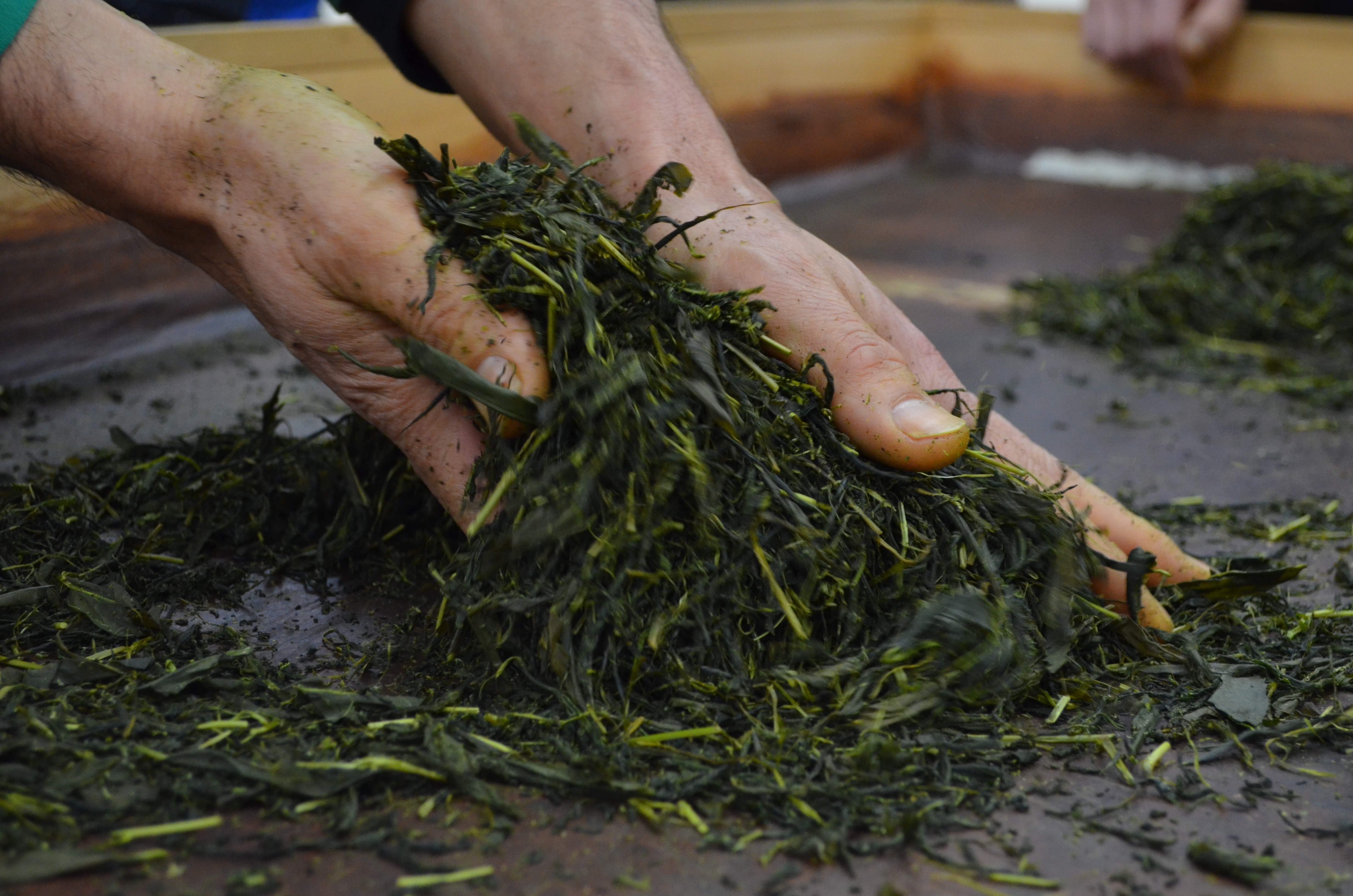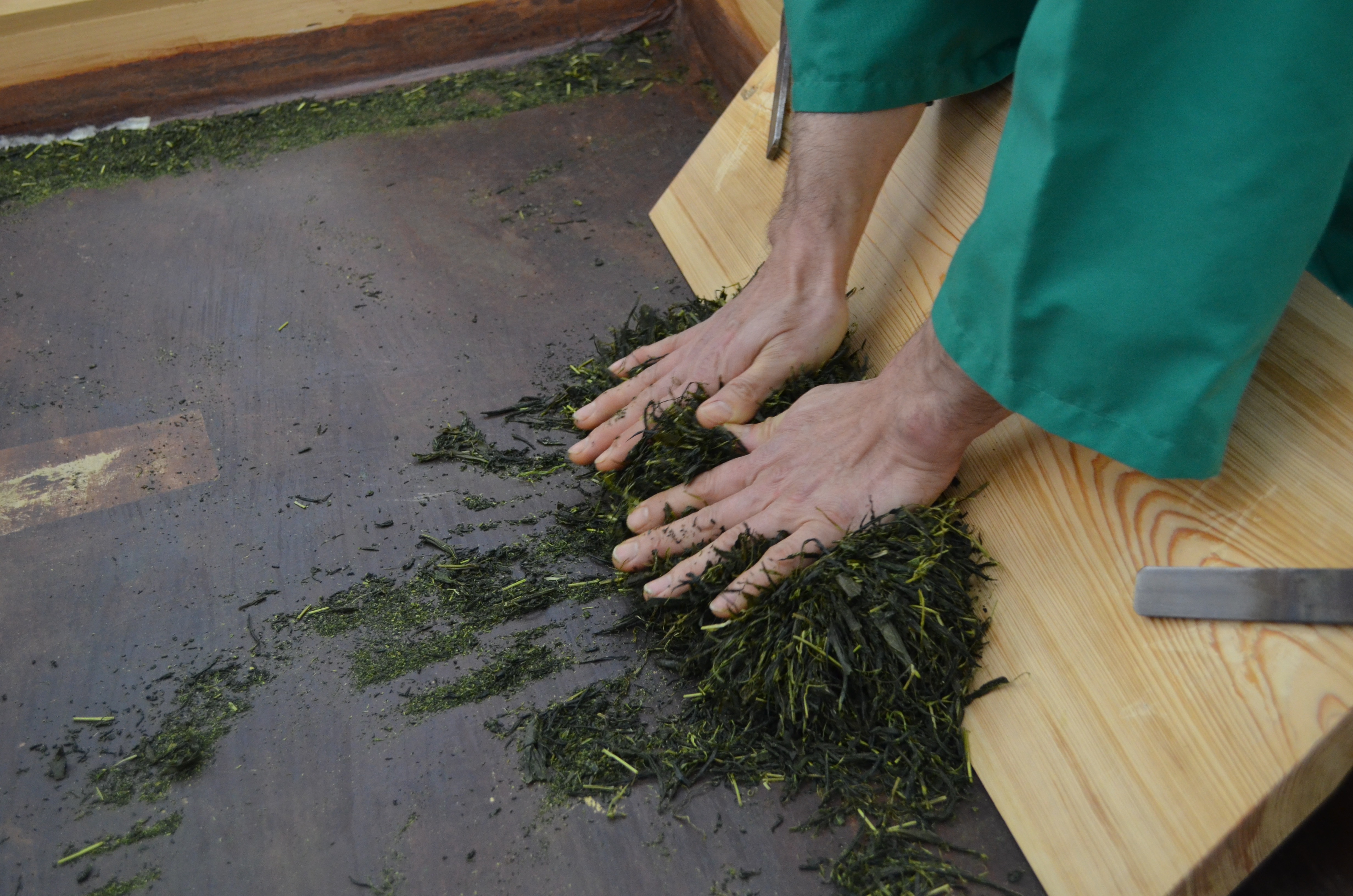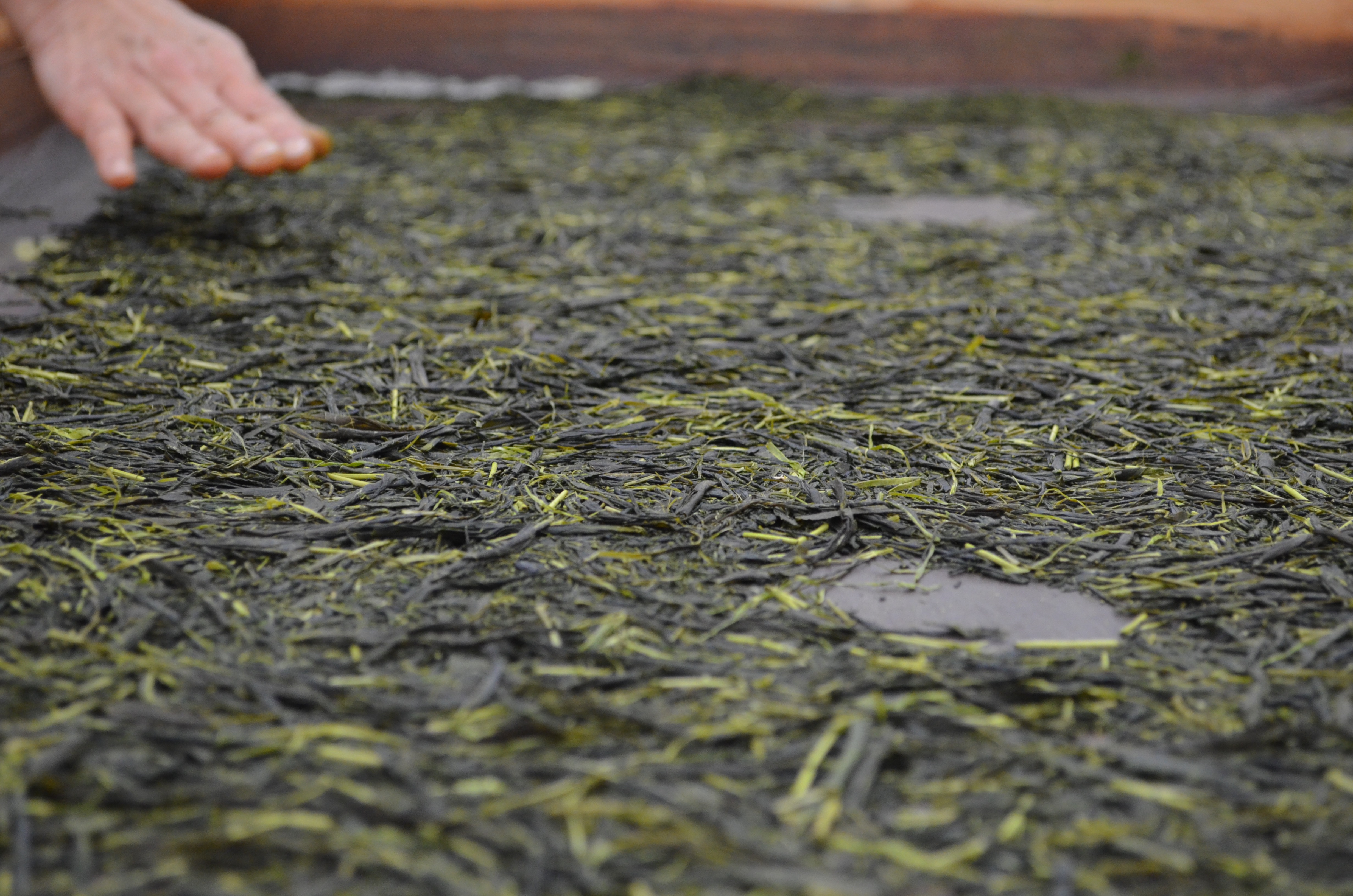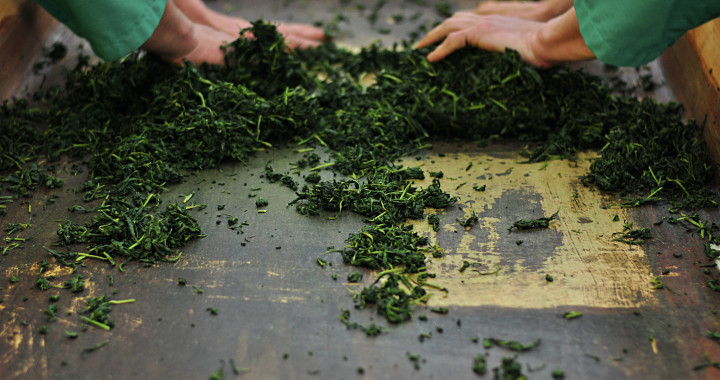After Akkisan, Obubu’s President and farmer took part in the 宇治茶製法手もみ技術大会 ‘Uji Tea Tea Rolling Competition’ and became 2nd together with the Wazuka Team it is time to explain a little more in detail about the hand- processing of Sencha.
There are two ways delicious sencha is produced: a hand rolling process (temomi) and a machine rolling process. Machine rolling was created in order to automate the hand rolling process and almost all sencha tea is processed now by machines. Occasionally, at tea cupping competitions or from luxury quality tea, hand processing is used.
Tea that has undergone processing from steaming to drying is called “aracha”, and can then be stored in cooled warehouses. Below we have a rough explanation of both the hand rolling process and the machine rolling process. All of the teas offered by Obubu are aracha and have been processed by machine. However, we do offer visitors the chance to hand pick their own leaves and hand roll them at special events through out the harvesting season.
A bit of history
The hand rolling process (and thus the first sencha) was created in 1738 by Sou-en Tagatani (27 March 1681 – 11 June 1778…wow, he lived a long time for the feudal era!!), a tea farmer who lived in the Ujitawara region just north of our own valley Wazuka. Prior to Tagatani’s invention of this rolling process, tea had been processed by steaming or boiling the leaves then drying them by roasting or leaving them out in the sun. The resulting tea leaves turned blackish as opposed to the green sencha we have today.
As the process became more and more automated, tea farmers have lost the need to hand roll their tea. Thus, we created the Temomi Preservation Society to make sure that we never forget our roots.
Hand rolling process for making aracha
Step 1: Steaming (蒸熱 jounetsu)
The leaves are steamed while quickly being stirred then moved to the oven. (You can get different levels of steaming, but Obubu’s teas are steamed only lightly because we want to preserve the natural flavor of the leaf as much as possible.)
________________________________
Step 2: Leaf pounding (葉打ち bauchi)
The steamed leaves are put into an oven and spun to dry the surface of the leaves.
________________________________
Step 3: Spin rolling (回転揉み kaiten-momi)
On top of a heated table, you make the tea leaves into a ball then roll it by pushing downwards on the leaves so that they “spin” or “roll” on the table. This helps to squeeze out liquid in the leaves.

________________________________
Step 4: Ball-breaking/mid-process finishing (玉解き・中上げ tama-toki, chuu-age)
After the spin rolling is finished, you’ll end up with clumps of leaves. You want to separate them and then spread the leaves out on the table

________________________________
Step 5: Twist-cut, roll-cut, turn over (撚り切り、揉み切り、でんぐり hineri-kiri, momi-kiri, denguri)
Place the leaves between your hands and apply force. With your fingers begin rolling the leaves so that the become long and round. Roll and let the leaves fall from your hands.

________________________________
Step 6: (仕上揉 shiage-momi)
As you push and pull and roll the leaves you begin to smell the aroma coming from the sap.

_______________________________
Step 7: Drying (乾燥 kansou)
Dry it with low temperature in and oven or heated area. When you push down on the leaves with your finger and they are brittle, you know you are done.

Once the tea leaves are processed into aracha, they are then sold to wholesalers, brokers and tea manufacturing companies who may undertake a second processing as well as a finishing that includes blending leaves from different farms and fields; sorting the aracha into leaf parts, leaf stems and particles; and finally dividing up the leaf parts into different sizes and cutting them to make them the same size. The blending especially changes the taste of the leaves and is how the tea manufacturers in Japan create different tasting sencha teas.
Also check out our video about hand- processing sencha: one leaf- one needle
More about temomi competition here.

